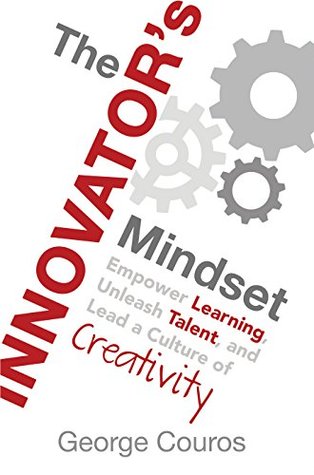More on this book
Community
Kindle Notes & Highlights
Read between
December 8 - December 22, 2015
Build Each Other up to Build Something Together
Instead of wondering if someone is smart, they wonder in what way that person is smart. —Liz Wiseman et al.[60]
By focusing on strengths first and building from there, as opposed to working from a deficit model that focuses only on where we need improvements, we create an environment where people feel they have a purpose in their classrooms and for the entire school.
identify where people shine. Tap into those strengths and use them to move forward.
Do we really think someone will be innovative in an area they hate?
Let’s take the time to understand what is possible from a learner-centered point of view, instead of blindly buying technology then asking “Now what?”
If educators can’t answer “Why?”, then they will never get to the “How?” and “What?”.
in the long term, what seems to be best for kids is to educate them to navigate a really confusing and fast-paced world, rather than leaving them to figure it out on their own.
Any time a new policy or procedure is presented for an entire school, we must ensure it does not punish everyone for the mistakes of a few. Innovative environments should be built on trust, not the lack of it.
learners are the driver; technology is the accelerator.
Presenting fewer choices to your staff may seem counterintuitive, but doing so—and providing ample time for exploration and collaboration to allow new and better ideas to emerge—helps educators move to the point where the technology becomes transformative.
The learning happens when we take what we know and make something out of it.
what we learn is not as important as what we create from what we learn.
Although offering too many choices can lead to feelings of becoming overwhelmed, it is imperative that leaders are careful not to constrain those we serve by only allowing them to explore designated tools or resources.
Innovation demands that our students learn the basics, but how we go about teaching them may look different than in years past.
“Reading and writing should be the floor, not the ceiling.”[73]
If we are to create a system that nurtures the skills Canuel identifies, educators cannot feel like they are a “jack of all trades, master of none.” Having a laser-like focus on a few things allows us to go deep and push our thinking, while creating new ideas to move forward. Less should definitely lead to more.
How do we make great learning go viral?
if you aren’t sharing your best ideas because you’re trying to gain a competitive advantage, you may be harming yourself.
the focus is not on helping kids but helping ourselves.
Competition is only a bad word in education if our students lose out as a result.
Go Global, Impact Local
Our world today is participatory; sharing should not be the exception in education but the rule.
want to note, too, that the use of technology does not lessen the value or impact of face-to-face connections. In fact, if we use technology to share on a consistent basis, face-to-face connections will likely improve.
Simon Sinek states, “Working hard for something we don’t care about is called stress; working hard for something we love is called passion.”[87]
If we create a culture where every teacher believes they need to improve, not because they are not good enough but because they can be even better, there is no limit to what we can achieve.—Dylan Wiliam
If you want to see the effectiveness of an educator, you do not look at what the teacher is doing but at the learners whom they serve.
Even with the best tools, however, if we do not understand how a portfolio can impact our own learning as educators, we will not be successful in using this technology in a meaningful way for our students.
Before we can decide if our schools are successful, we have to first define what success means, realizing our impact is measured long after a child leaves school.
Today’s innovation could be tomorrow’s norm—a reality that fuels a cycle of continuous improvement.


